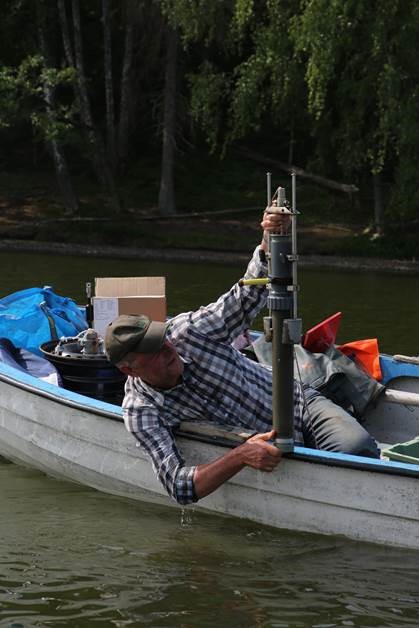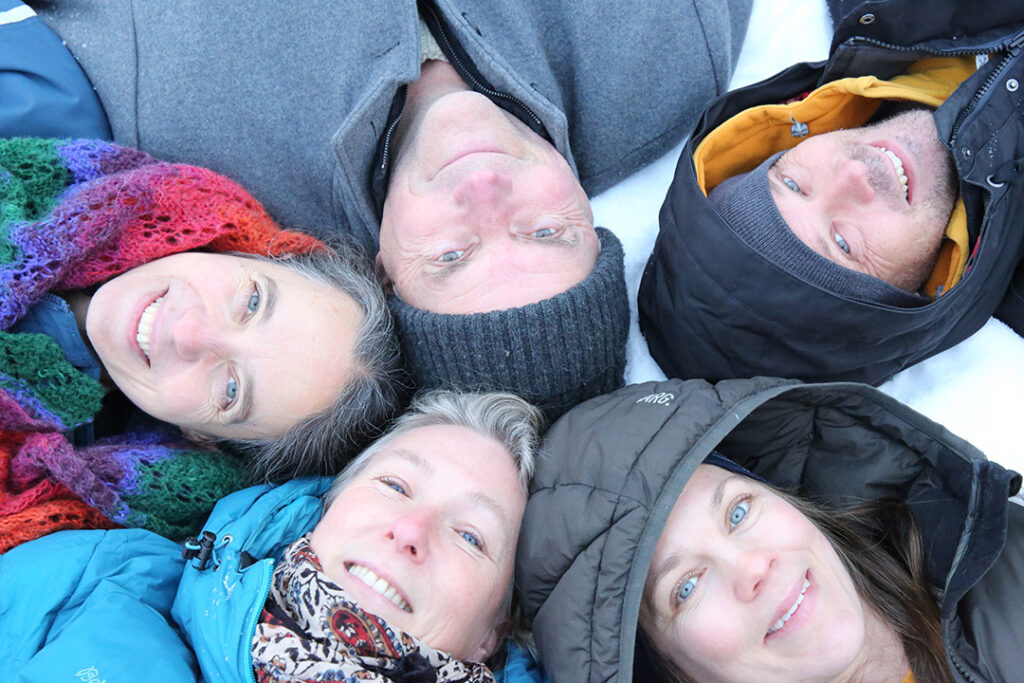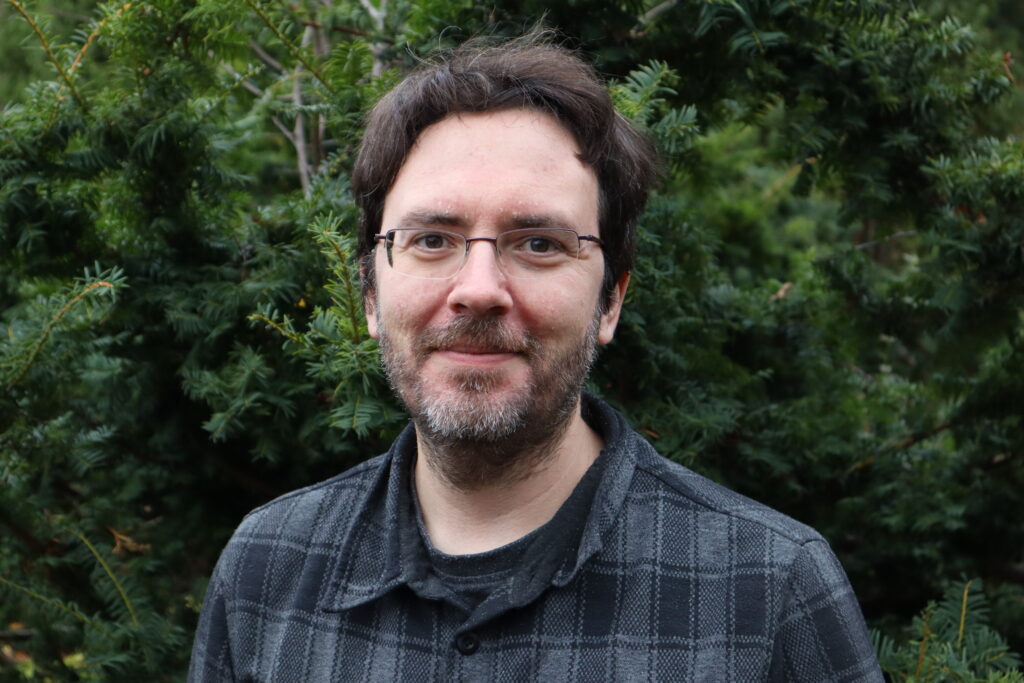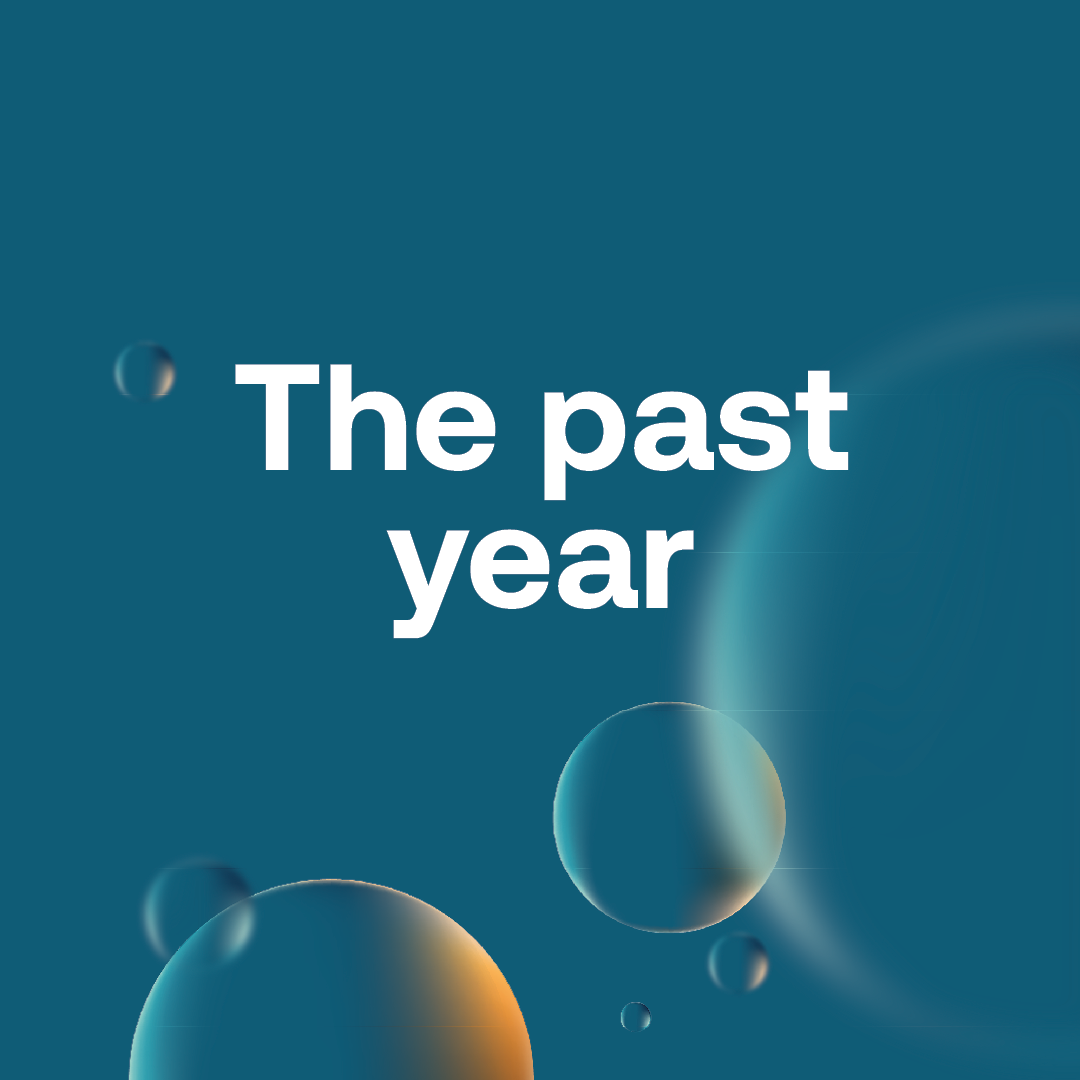It’s challenging to put words to the past year. Perhaps the word ‘turbulent’ is appropriate? While the political unwillingness to take strong measures to protect the fish in the Baltic Sea continues, we are convinced that new knowledge will make it difficult for decision-makers to turn a blind eye. Therefore, our projects and knowledge-building programs are more important than ever. In 2024, results from several of our projects will be presented, and the construction of the BalticWaters fish laboratory will be the starting point for of a deeper understanding of some of the Baltic Sea’s most important fish species. We will work hard to bring about change so that more people can experience and discover our unique and magical inland sea.
Fisheriespolicy causing harm rather than helping
Just over half a year after Peter Kullgren became Minister for Rural Affairs, we asked ourselves if he would take action to save the Baltic herring, or follow in the footsteps of his predecessors. Unfortunately, it seems to be the latter. The urgent situation for Baltic herring was not reflected in the 2024 quotas agreed upon by the EU’s responsible ministers in October. Despite the fact that the decision contradicts the multi-annual management plan for the Baltic Sea – a crucial tool for meeting the requirements of the Common Fisheries Policy – it sounded as usual from Sweden’s side: the negotiations have been successful, and small-scale fisheries are being protected. However, it has become clearer than ever that it is challenging to preserve small-scale coastal fishing if large-scale industrial fishing for feed continues. In 2022, the 20 largest boats accounted for nearly 95 percent of the Swedish catch in the Baltic Sea, and during the same year, almost one in four Swedish fishing boats stopped fishing compared to the previous year – affecting small-scale fishermen.
In spring 2023 we chose to examine the large-scale fishing industry in the Baltic Sea, revealing that 16 of the 20 largest boats were involved in a total of 60 violations, with the majority related to misreporting of herring and sprat. Tens of thousands of kilograms of one species could be incorrectly reported during a single port delivery. At the same time, fisheries inspectors warn that controls of large fishing vessels do not work and feel like “playing to the gallery.” Incorrect reports have far-reaching consequences as the International Council for the Exploration of the Sea (ICES) draws inaccurate conclusions about the sustainable fishing levels. This, in turn, leads to policymakers using unreliable data to decide on quotas.

Herring
In the central Baltic Sea, the herring stock has decreased by over 80 percent compared to the 1970s. Over the past four years, the stock has declined by 40 percent, reaching a critical level. Scientists and coastal fishermen report that it is increasingly difficult to catch large herring for human consumption. Today, industrial fishing accounts for over 90 percent of the Swedish herring catch – catches processed into feed for salmon, mink, and chicken.
In 2024, we will continue to provide information and propose measures to decision-makers, advocating for reduced fishing quotas and improved management. Because it should be painful to deplete the Baltic Sea, not profitable.
Enable new research and expand our own
During the autumn intensive work has been carried out on the design process, construction documentation, and procurement prior to the construction start of the BalticWaters fish laboratory – the first of its kind in the Baltic Sea region. The laboratory will facilitate large-scale research on the Baltic Sea’s wild cold-water fish – from small to fully grown fish. Guest researchers wanting to study species such as cod, herring, and sprat will be welcomed. At the same time, the laboratory will host the foundation’s demonstration project ReCod – the release of small cod in the Baltic Sea, which has outgrown the research station Ar on northern Gotland. The goal is to continue researching whether it is possible to release cod larvae in the Baltic Sea, if they survive, and if they can establish themselves in areas where cod previously spawned. If successful, the next step is to raise cod fry for release. We look forward to the first shovel of soil at Studsvik Tech Park, where the laboratory will be established.
Projects for a living Baltic Sea
ReCod – release of small cod in the Baltic Sea
In May, the annual cod spawning began at the research station Ar on Gotland, where the ReCod project is carried out.
”It’s almost embarrassing,” commented Johanna Fröjd, project manager for ReCod, with a smile.
When spawning was in full swing in 2022, so many fertilized eggs were produced that the number of incubation units – small pools where the eggs are stored until the larvae hatch – was not enough. But in 2023, the project expanded with twice the number of incubation units.
In early June, it was time for the first release of larvae of the year. The larvae are released when they are 4-6 days old, having not yet consumed their yolk sac but learned to swim. During the year, releases were focused on the Tvären bay. It is an enclosed, deep bay resembling a miniature Baltic Sea with good conditions for recapturing the fish, a crucial requirement for evaluating the project. Approximately 1 million small larvae were released into the bay during the summer season.
Cod at Ar in March 2023. Video: Madeleine Kullenbo, BalticWaters.
As in previous years, it was also time to release a number of cod back into the Baltic Sea after they have spent about 2-3 years at the station to ensure genetic variation among the larvae hatching within the project. The cod release also made room for a new generation of cod that moved in during late autumn and hopefully will spawn in the spring.

Cod just released back into the Baltic Sea. Photo: Joakim Odelberg
PhD-students Maddi Garate-Olaizola and Neele Schmidt have not been idle. At the end of the year, they released their first scientific article within the project. The article is based on the experiments Neele and Maddi conducted throughout the year to determine how cod larvae hatching at the research station can best adapt to life in the Baltic Sea.
“In 2024, we will continue our work to evaluate the releases and plan several interesting and important experiments on the growth of cod and genetic studies on cod larvae”, says Johanna.
“We have very good conditions for a successful spawning season in 2024. We have plenty of healthy fish of good size, and we can use the detailed data we collected last year to maximize reproductive success”, concludes Johanna.
👉🏾 Read more about ReCod here.
Thriving bays

2023 has been another intense year for researchers within the project Thriving bays. Early in the spring, sampling continued in the four demo bays and their control bays. During the year, the project group continued working to collect data to identify the main causes of the environmental issues the bays face and find suitable measures and plans for each bay going forward. At the same time, the work to evaluate different measures individually has continued. A common denominator for many shallow bays is that they have been dredged at some point, and researchers have discovered that dredging of the bay mouths still affects the bays today – and not for the better.
During dredging and erosion, nutrients, in the form of phosphorus, can be released from the sediments and drive the growth of, for example, phytoplankton. The altered water flow due to dredging also seems to contribute to increased erosion and turbidity. To investigate this further, and test if phosphorus binding can be strengthened in sediments, pilot tests with aluminium treatment have been conducted in some of the bays within the project. The results will determine whether the measure should be tested on full scale.


In parallel with the project, a study is being conducted to examine how residents near the project bays perceive and use their bay. The study will continue in 2024 and contribute with important input on how to succeed in improving the bays’ environment. The study has revealed that shallow bays evoke emotions, something that Åsa Nilsson Austin, one of the researchers within Thriving Bays, expressed along with music by composer Anna Berg during the 2023 Baltic Sea Festival.
After two years of intensive field studies investigating how reed cutting effects the ecosystem and how small boats affect turbidity in shallow bays, the studies are complete. Now, the scientific evaluation remains, and later this year results will be presented, which is incredibly exciting. In 2024, the work will also intensify with measures in the demo bays.

👉🏾 Read more about Thriving bays here.
Circular NP – Better nutrient cycling for animal manure
How do we create a more circular agriculture when entire regions specialize in animal production – and thus produce an excess of nutrients in the form of manure – while other regions specialize in crop cultivation and have a nutrient deficit? This is what researchers are investigating in the Circular NP project. By testing and evaluating methods that extract nutrients from animal manure and digestate from biogas plants, the goal is to produce organic fertiliser products that can more easily be transported from areas with nutrient surpluses to areas with deficits.
“Slurry and animal manure contain phosphorus, nitrogen, potassium, and organic material that the soil and crops need – a resource, simply! If we can separate the nutrients from animal manure and slurry, make them plant-available, and also tailor the dose to a specific crop’s needs, it can create an opportunity for a market with organic fertilizers”, says Athanasios Pantelopoulos, one of the researchers in the project, in an article.
By utilizing nutrients in manure, the risk of leakage into the Baltic Sea decreases. The hope is also that the new organic fertilisers can replace much of the imported mineral fertiliser used today.

“If we have our own production of plant nutrients in the country, our resilience increases”, says Erik Sindhöj, researcher in the Circular NP project and senior researcher at RISE, in an interview on TV4.
The project is now in its third year, and in 2024, the evaluation of treatment methods will be completed. The developed fertiliser products that show the best results in small-scale experiments will be tested and evaluated in full-scale field trials. The dialog with farmers and producers will continue because their input is vital for creating a competitive, environmentally friendly, and sought-after product.

The project uses digestate from the biogas plant More Biogas, and separated animal manure directly from the farms. Nitrogen circulates in the immediate area, while the phosphorus becomes a resource for farms further away that experience a need in phosphorus. The plant nutrients efficiency increases and the risk of eutrophication of the Baltic Sea decreases. Illustration: Madeleine Kullenbo, BalticWaters
👉🏾 Read more about Circular NP here.
Knowledge-building programs
During the year, the foundation has awarded 5 scholarships under the scholarship program for researchers at the beginning of their careers and granted funds to 6 new research projects under its program to fund research projects and pre-studies. For the second year in a row, the foundation carries out the scholarship programme Students for the Baltic – a school trip with the sea in focus to raise awareness of Baltic Sea challenges and opportunities among students in grade 8–9. In addition to a visit to Gröna Lund, last year’s winners spent a full day at the Baltic Sea Science Center at Skansen.
Last, but certainly not least, we have had the honour of having the trainees, Johanna Svensson, Louisa Juvall Molin, and Ebba Rosendahl, with us during autumn and throughout the year. During their time at the foundation, they wrote the policy document “Help the Baltic Sea mitigate Climate Change“.
If you want to know more about the trainee program, read more here.

Spreading knowledge to increase engagement
In addition to continuing our work in our projects, next year we will continue our efforts to increase interest and knowledge about the Baltic Sea’s possibilities and challenges, both for decision-makers, journalists, and the interested public. In 2023, we developed the report Vision for a healthy Baltic Sea based on current knowledge and interviews with researchers in various fields. The goal of the vision is to present realistic goals and concrete actions, based on current science, to achieve a better environment in the Baltic Sea. In 2024, we will continue working on part two of the vision, focusing on policy.
We will also continue to dispel myths and scrutinise claims about the Baltic Sea in our article series Murky Waters, and in Deep Dive – a longer reading concept where we go deeper into a topic – you will be able to immerse yourself in Baltic Sea-related subjects.

